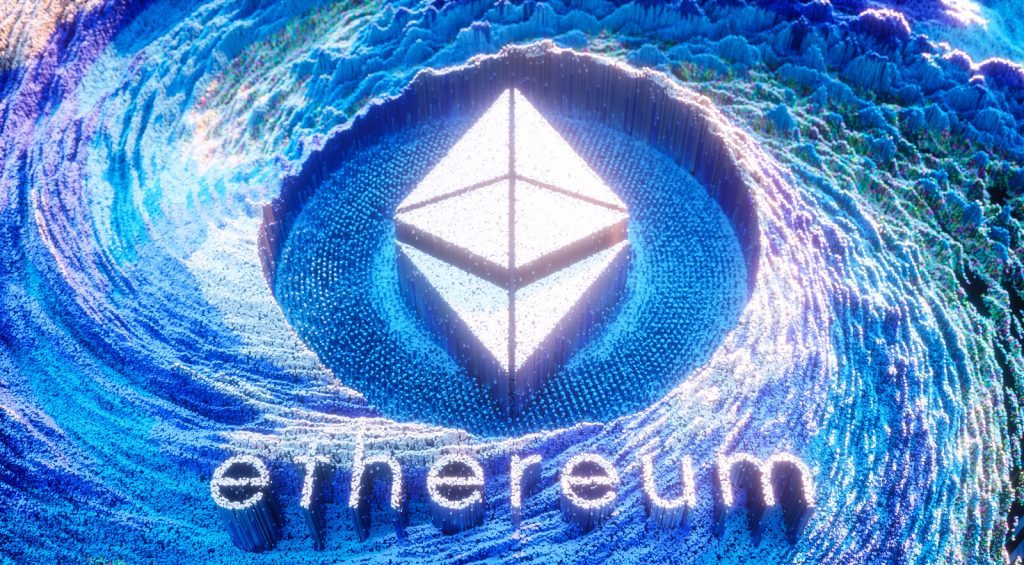Perhaps you’ve been hearing the whispers on the wind, the low hum of excitement in the world of blockchain technology. If you’re curious, you’ve come to the right place. We’re here to talk about Ethereum’s Surge. You might be wondering, what is this Surge, and where is it available? Although it’s not here quite yet, the Surge represents the exciting future of the Ethereum network.
Ethereum’s Surge isn’t just a simple upgrade, it’s a revolution, an evolutionary leap forward for the Ethereum network. We’re talking about a set of upgrades, the most notable among them being sharding. Sharding? Yes, sharding. It’s an innovative concept that’s poised to help Ethereum soar to new heights in performance, scalability, and utility. But that’s just the tip of the iceberg. As we delve deeper into the world of Ethereum’s Surge, you’ll see why it’s creating such a stir!
Understanding Ethereum’s Transition to Surge: An In-depth Perspective


As we continue on this journey, you might be eager to know about the next Surge. After all, Ethereum’s transition to Surge isn’t just a trivial modification; it’s a significant step in addressing one of the network’s major challenges – scalability.
Scalability, in layman’s terms, is the ability of the network to handle an increasing amount of work or, in this case, transactions. Ethereum, for all its robustness and versatility, has been grappling with this issue for a while. As more users join the Ethereum network and more transactions occur, the network’s ability to handle the load efficiently becomes a pressing concern.
Enter sharding, the hero of our story. Sharding is an innovative technique that addresses this problem head-on, and it’s a critical component of Ethereum’s transition to Surge. Picture the Ethereum network as a gigantic puzzle. Sharding effectively breaks this puzzle into smaller, more manageable pieces called shards, each capable of operating independently. This partitioning of the Ethereum network is where the magic happens. By enabling these shards to operate simultaneously, we effectively increase Ethereum’s throughput and make the network more efficient.
Sharding in the Context of Ethereum: Exploring the Details
To truly understand the genius behind sharding, we need to dig a little deeper. As we’ve mentioned before, in the context of Ethereum, sharding is akin to breaking down the network into smaller, manageable chunks known as shards. Each shard chain, as part of the larger Ethereum network, has its own set of validators – nodes that verify and validate transactions happening within that shard.
By dividing the Ethereum network into these shards, the network’s workload is effectively distributed, meaning transactions can be processed in parallel across multiple shards. This significantly increases the network’s capacity to handle transactions, leading to improved throughput. In short, sharding enables Ethereum to process more transactions per second than before, dramatically enhancing the network’s performance and scalability.
This approach is a game-changer. As the Ethereum network continues to grow and attract more users, its scalability issues become more critical. The incorporation of sharding into the Ethereum network, as part of the Surge, is a vital step towards addressing these challenges. It not only improves the network’s performance but also paves the way for the next wave of decentralized applications and services.
Rollups and Calldata: Current State of Ethereum
The present Ethereum landscape is a bustling hub of innovation, brimming with potential and advancements. Yet, as the world of decentralized applications and services continues to expand, the network has had to search for ways to keep up with the demand. Enter rollups and calldata.
Currently, rollups, a layer-2 solution, shoulder a lot of the execution load in the Ethereum network. They offer a cost-effective way to execute transactions off-chain before settling the results on the Ethereum mainnet. But as beneficial as they are, there’s a catch – the use of calldata for storage. Calldata, while the cheapest form of storage on Ethereum, still bears a substantial cost, especially as it passes through the Ethereum Virtual Machine (EVM) and is permanently recorded on the blockchain.
While this has served Ethereum well in the past, the advent of the Surge introduces an exciting, more scalable solution – the transition to danksharding.
The Proto-Danksharding Evolution
As Ethereum looks towards the Shanghai hard fork, a significant upgrade called proto-danksharding is being eyed. The core of this upgrade lies in a new transaction type known as Blob-carrying transactions, introduced via EIP-4844.
Unlike regular transactions, these Blob transactions not only provide data availability guarantees but also bypass the need for permanent data storage. The blobs, at 125 kilobytes each, are much larger than an average Ethereum block, allowing for the accommodation of more data.
Additionally, these transactions contribute to a more efficient gas market by uncoupling the cost of data availability from execution costs. With the introduction of Proto-Danksharding, Ethereum takes a significant leap towards full danksharding, improving its scalability while ensuring the data remains accessible, without the need for permanent storage.
The Journey from Proto-Danksharding to Full Danksharding
Proto-danksharding, while a step in the right direction, is only a pitstop on Ethereum’s journey to full danksharding. As we move towards full danksharding, we’re looking at an increased throughput of rollups by several multiples.
The concept of danksharding relies on spreading the responsibility of data availability across validators, a process that essentially decentralizes data storage. The data is split into blobs or shards, each validator then checks the availability of their assigned shards once per epoch. This shared responsibility eases the load on individual validators.
The magic of danksharding also lies in its application of erasure coding, a method that allows for data reconstruction even if some parts of the data are missing, as long as a sufficient number of samples is available. With the completion of full danksharding, Ethereum is looking at a scalable future, with enhanced security and a network that can support an ever-growing number of transactions.
Validator’s Role in Danksharding
In the danksharding landscape, validators hold a crucial role in maintaining network integrity. How so, you ask? Well, under the full danksharding model, the responsibility of checking data availability is distributed among the validators.
Every validator is assigned certain shards, and their task is to ensure the availability of their assigned shards once per epoch. This process of data availability checking helps to distribute the load evenly among validators. Each validator’s duty is to attest honestly to their data, facilitating the reconstruction of the original data, provided that a sufficient number of samples is available.
The Proposer-Builder Separation and its Impact on Ethereum


As we delve into the depths of danksharding, one crucial upgrade comes into focus: the Proposer-Builder Separation. As the name suggests, this upgrade separates the tasks of proposing and building blocks, which was previously the responsibility of a single entity.
Under the new upgrade, block builders take on the computational load of blob encoding and distributing data. This separation prevents the increase in validator requirements from having an adverse impact on network diversity.
This separation of duties not only optimizes the workflow but also brings about more decentralization. By ensuring that the role of proposing blocks is separate from building them, the network mitigates the risk of centralization, while allowing for an increase in block size without overwhelming validators.
The Future of Ethereum with Surge: Summary and Conclusion
The Ethereum Surge, spearheaded by sharding and the transition to danksharding, represents a pivotal moment in Ethereum’s history. With a focus on scalability and enhanced transaction throughput, the Surge is set to take Ethereum to the next level.
By leveraging the strengths of rollups for layer-2 scalability and prioritizing making data availability cheaper, the Surge aims to enhance network performance without compromising on security. The introduction of Proto-Danksharding, followed by the transition to full Danksharding, promises significant improvements in Ethereum’s ability to manage the growing demand.
In conclusion, the Ethereum Surge represents an exciting chapter in the evolution of Ethereum. By increasing scalability, ensuring security, and promoting decentralization, the Surge is poised to make Ethereum more efficient, robust, and capable of handling the decentralized future.









